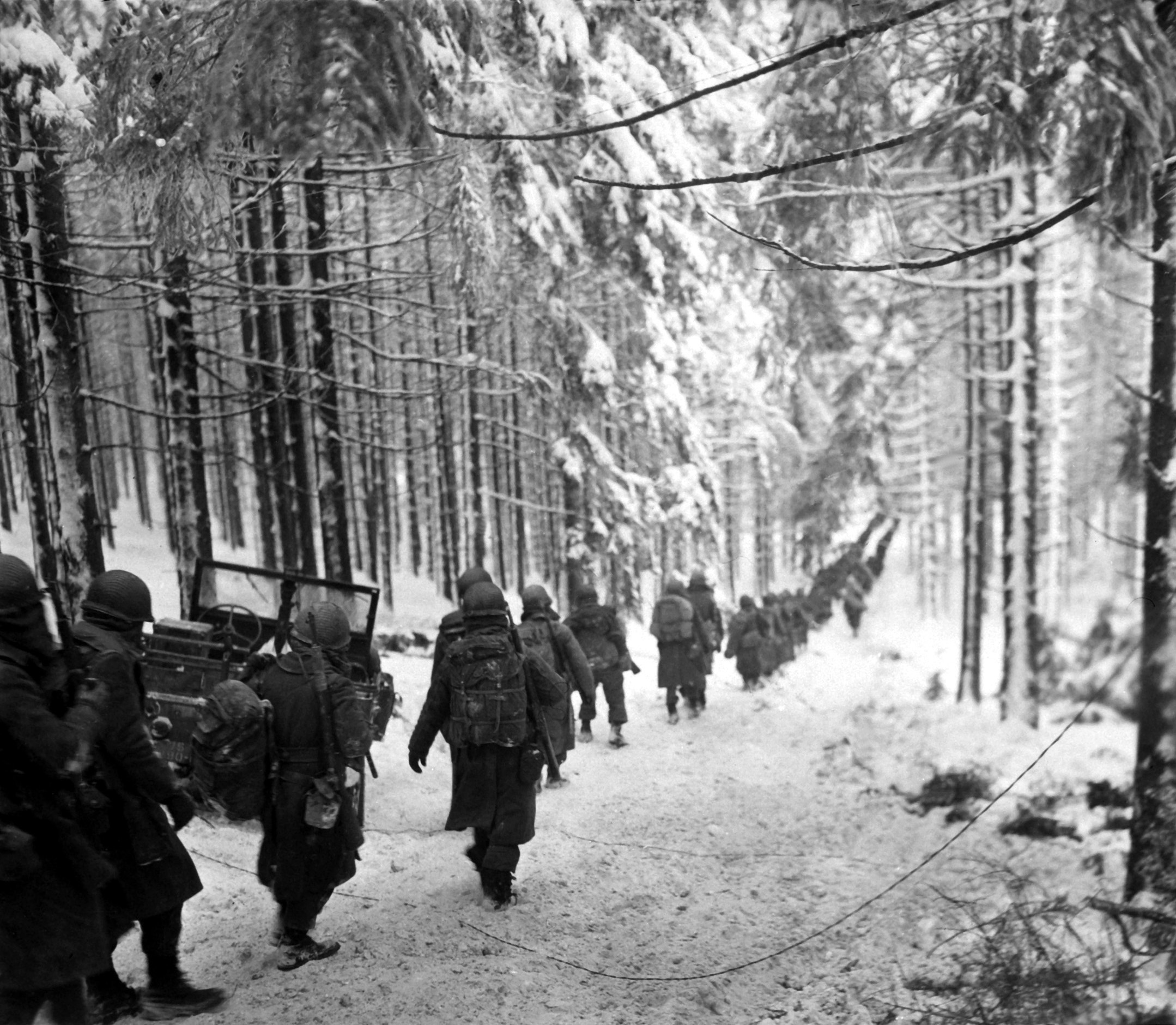289th Infantry Regiment (United States) on:
[Wikipedia]
[Google]
[Amazon]
The 289th Infantry Regiment is an

infantry
Infantry, or infantryman are a type of soldier who specialize in ground combat, typically fighting dismounted. Historically the term was used to describe foot soldiers, i.e. those who march and fight on foot. In modern usage, the term broadl ...
regiment in the U.S. Army Reserve.
History
The regiment was activated on 15 April 1943 at Fort Leonard Wood, Missouri. The regiment was sent to the European in 1944 and participated in the Rhineland, Ardennes-Alsace and Central Europe campaigns. It was inactivated on 23 November 1945 at Camp Patrick Henry, Virginia. The regiment was allocated to the Organized Reserve Corps and re-activated on 1 March 1952 and its headquarters located at Beaumont, Texas. The Organized Reserve Corps was re-designated on 9 July 1952 as the Army Reserve. The location of headquarters changed 25 May 1954 to College Station, Texas. The regiment was inactivated on 31 January 1955 at College Station, Texas, and relieved from assignment to the 75th Infantry Division the same date.Lineage
Constituted 24 December 1942 in the Army of the United States as the 289th Infantry and assigned to the75th Infantry Division (United States) 75th Division or 75th Infantry Division may refer to:
* 75th Reserve Division (German Empire)
* 75th Division (People's Republic of China)
* 75th Infantry Division (Russian Empire)
* 75th Cavalry Division (Soviet Union)
* 75th Guards Tank Div ...
* Activated 15 April 1943 at Fort Leonard Wood
Fort Leonard Wood is a United States Army, U.S. Army training installation located in the Missouri The Ozarks, Ozarks. The main gate is located on the southern boundary of the city of St. Robert, Missouri, St. Robert. The post was created in De ...
, Missouri
* Inactivated 23 November 1945 at Camp Patrick Henry
Camp Patrick Henry is a decommissioned United States Army base which was located in Warwick County, Virginia. After World War II, the site was redeveloped as a commercial airport, and became part of City of Newport News in 1958 when the former C ...
, Virginia
* Allotted 21 February 1952 to the Organized Reserve Corps
* Activated 1 March 1952 with headquarters at Beaumont, Texas
* (Organized Reserve Corps redesignated 9 July 1952 as the Army Reserve)
* (Location of headquarters changed 25 May 1954 to College Station, Texas).
Inactivated 31 January 1955 at College Station, Texas, and relieved from assignment to the 75th Infantry Division
* Redesignated 1 October 1993 as the 289th Regiment and reorganized to consist of the 1st, 2d, and 3d Battalions, elements of the 75th Division (Exercise)
* Reorganized 17 October 1999 to consist of the 1st, 2d, and 3d Battalions, elements of the 75th Division (Training Support); 2d Battalion concurrently allotted to the Regular Army
* Elements ordered into active military service in support of the War on Terrorism
* Relieved 1 May 2007 from assignment to the 75th Division (Training Support)
Distinctive unit insignia
* Description A Silver color metal and enamel device in height overall, consisting of a shield blazoned: Argent, abunch of grapes
In viticulture, the grape cluster (also bunch of grapes) is a fertilized inflorescence of the grapevine, the primary part of this plant used for food (grape leaves are also used in some culinary traditions). The size of the grape bunch greatly va ...
stalked and leaved between in bend an acorn and a fleur-de-lis Azure. Attached below the shield a Silver scroll inscribed "VINCERE AUT MORI" in Blue. The translation of the motto is "To Conquer or To Die."
* Symbolism
Blue and white are colors traditionally associated with Infantry. The grapes refer to service in the Rhineland; the acorn is for the forests of Ardennes; and the fleur-de-lis for Central Europe; all symbolic of the unit's service in World War II.
* Background
The distinctive unit insignia was originally approved for the 289th Infantry Regiment on 19 June 1952. It was redesignated for the 289th Regiment, with description and symbolism revised, on 28 October 1993.

Coat of arms
*Blazon **Shield: Argent, a bunch of grapes stalked and leaved between in bend an acorn and a fleur-de-lis Azure. **Crest: That for the regiments and separate battalions of the Army Reserve: From a wreath Argent and Azure, the Lexington Minute Man Proper. The statue of the Minute Man, Captain John Parker (H.H. Kitson, sculptor), stands on the Common in Lexington, Massachusetts. **Motto VINCERE AUT MORI (To Conquer or To Die). * Symbolism **Shield: Blue and white are colors traditionally associated with Infantry. The grapes refer to service in the Rhineland; the acorn is for the forests of Ardennes; and the fleur-de-lis for Central Europe; all symbolic of the unit's service in World War II. **Crest: The crest is that of the U.S. Army Reserve. * Background: The coat of arms was originally approved for the 289th Infantry Regiment on 19 June 1952. It was redesignated for the 289th Regiment, with blazon and symbolism revised, on 28 October 1993.Campaign streamers
World War II * Rhineland * Ardennes-Alsace * Central EuropeDecorations
2d Battalion entitled to: *Army Superior Unit Award
The Superior Unit Award is a decoration of the United States Army which is awarded in peacetime to any unit of the Army which displays outstanding meritorious performance of a difficult and challenging mission carried out under extraordinary circu ...
, Streamer embroidered 2001-2004
3d Battalion entitled to:
* Army Superior Unit Award, Streamer embroidered 2003
References
* * {{ReflistExternal links
* http://www.criticalpast.com/video/65675072470_289th-Infantry-Regiment_World-War-II_soldiers-paint-signs_bridges-and-buildings 289